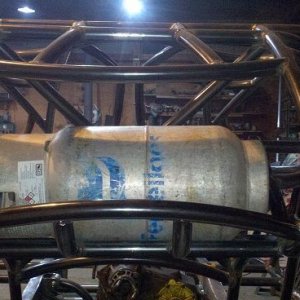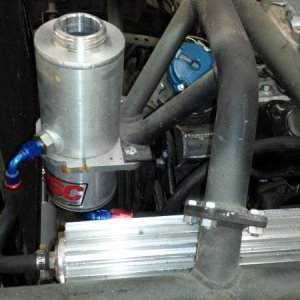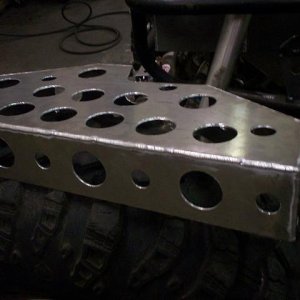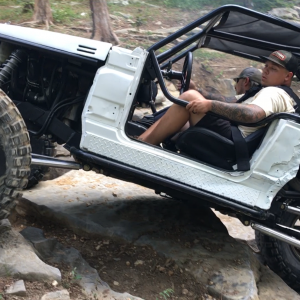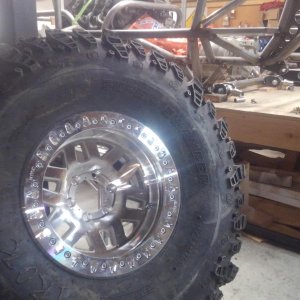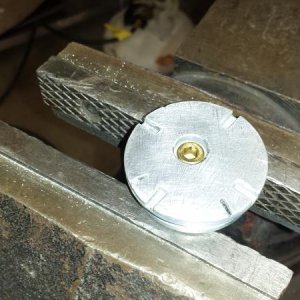-
Help Support Hardline Crawlers :
You are using an out of date browser. It may not display this or other websites correctly.
You should upgrade or use an alternative browser.
You should upgrade or use an alternative browser.
Big tires or little tires
- Thread starter JAWS
- Start date
It's not the tire size. it's the idiot drivers, but idiot drivers with big tires will do more damage than idiot drivers with little tires.
BTW: you CAN use a winch for more than just getting unstuck. :awesomework: shocker??
end of thread, carry on. :haha:
BTW: you CAN use a winch for more than just getting unstuck. :awesomework: shocker??
end of thread, carry on. :haha:
Last edited:
Money Mark
Well-Known Member
- Joined
- May 19, 2006
- Messages
- 563
Driver.......
Damnyankee
Well-Known Member
Driver.......
with small tires
Why?
most new wheelers drive like idiots, cause they don't know better. most new wheelers havn't progressed to bigger tires.
ergo, you will find more small tired rigs doing more damage to the trail than large tires simply because of volume
Money Mark
Well-Known Member
- Joined
- May 19, 2006
- Messages
- 563
Nope.
I have big tires and **** **** up.....:cheer:
I have big tires and **** **** up.....:cheer:
zukkev
Cornfuzzled yet again...
It's the driver behind the wheel---tire size alone doesn't make up all the damage;
In some cases, bigger tires with an intelligent driver can have the potential for less damage, while in other cases/situations smaller tires with an idiot behind the wheel have the potential for more damage than the scenario mentioned prior given the same trail conditions/obstacles...
In some cases, bigger tires with an intelligent driver can have the potential for less damage, while in other cases/situations smaller tires with an idiot behind the wheel have the potential for more damage than the scenario mentioned prior given the same trail conditions/obstacles...
TreeClimber
Well-Known Member
Driver.
That typed. A big tired rig unequivically has the CAPACITY to do more damage than a similarly equipped small tire vehicle.
I guarantee, that my 37s CAN do more damage than my 33s ever thought about doing.
But it's all about the DRIVER. Because as an experienced driver, I can go places with my 37s without ever spinning a tire, that my 33s would have had to throttle up. Ergo, in that case, the 33s would have done more damage. However, if I had throttled up the 37s in the same situation, they would have done more damage. So it goes right back to DRIVER.
That typed. A big tired rig unequivically has the CAPACITY to do more damage than a similarly equipped small tire vehicle.
I guarantee, that my 37s CAN do more damage than my 33s ever thought about doing.
But it's all about the DRIVER. Because as an experienced driver, I can go places with my 37s without ever spinning a tire, that my 33s would have had to throttle up. Ergo, in that case, the 33s would have done more damage. However, if I had throttled up the 37s in the same situation, they would have done more damage. So it goes right back to DRIVER.
Damnyankee
Well-Known Member
Nope.
I have big tires and **** **** up.....:cheer:
at least your honest.:awesomework:
I don't have enough horse power to **** **** up..:redneck:
Damnyankee
Well-Known Member
Driver.
That typed. A big tired rig unequivically has the CAPACITY to do more damage than a similarly equipped small tire vehicle.
I guarantee, that my 37s CAN do more damage than my 33s ever thought about doing.
But it's all about the DRIVER. Because as an experienced driver, I can go places with my 37s without ever spinning a tire, that my 33s would have had to throttle up. Ergo, in that case, the 33s would have done more damage. However, if I had throttled up the 37s in the same situation, they would have done more damage. So it goes right back to DRIVER.
ok, just being the devil advocate, why would say a 38 x 12.5 swamper do more damage than a 33x 12.5 swamper?
same width, similar tread depth, same patern..:stirpot:
TreeClimber
Well-Known Member
ok, just being the devil advocate, why would say a 38 x 12.5 swamper do more damage than a 33x 12.5 swamper?
same width, similar tread depth, same patern..:stirpot:
Because it can dig a (2.5") deeper hole.
Money Mark
Well-Known Member
- Joined
- May 19, 2006
- Messages
- 563
I'm not agueing with you.
Why have you (and many others) equated "damage" to the amount of earth one moves in a single maneuver? TRUE......your point about the capacity is undeniable. But one must use the capacity. Damage = Driver.
The direction and placement of the trail is MUCH more at blame to said damage than the tire traversing the terrain.:awesomework:
.......without ever spinning a tire......
Why have you (and many others) equated "damage" to the amount of earth one moves in a single maneuver? TRUE......your point about the capacity is undeniable. But one must use the capacity. Damage = Driver.
The direction and placement of the trail is MUCH more at blame to said damage than the tire traversing the terrain.:awesomework:
bobbed_84_toy
ALWAY$ BROKE
ok, just being the devil advocate, why would say a 38 x 12.5 swamper do more damage than a 33x 12.5 swamper?
same width, similar tread depth, same patern..:stirpot:
It can dig deeper
Edit: much too slow
Money Mark
Well-Known Member
- Joined
- May 19, 2006
- Messages
- 563
It can dig deeper
What (who) is the catalyst to make it (the tire) dig deeper?
The driver.:awesomework:
bobbed_84_toy
ALWAY$ BROKE
What (who) is the catalyst to make it (the tire) dig deeper?
The driver.:awesomework:
Fully agree
TreeClimber
Well-Known Member
Why have you (and many others) equated "damage" to the amount of earth one moves in a single maneuver? TRUE......your point about the capacity is undeniable. But one must use the capacity. Damage = Driver.
The direction and placement of the trail is MUCH more at blame to said damage than the tire traversing the terrain.:awesomework:
I don't. There's been many a rocky ledge that the 37s simply contour up and over. However the 33s would have had to bounce up, which often can cause rocks to kick out, thereby changing (or damaging) the trail for the next vehicle.
Now it can be argued that the evolution of a trail is NOT damage, but rather simple evolution, whether that makes it easier or harder (which are both also OK) So I suppose the real question was how to define what the OP meant by the word "damage".
Binder
Well-Known Member
Typical rig running big tires also has big diffs so there goes the "big tires dig deeper" argument....It isn't about tires at all it's all driver.
Money Mark
Well-Known Member
- Joined
- May 19, 2006
- Messages
- 563
So I suppose the real question was how to define what the OP meant by the word "damage".
:awesomework:
crash2
-Oh no I picked a side-
Tire size is only one factor.......
Money Mark
Well-Known Member
- Joined
- May 19, 2006
- Messages
- 563

